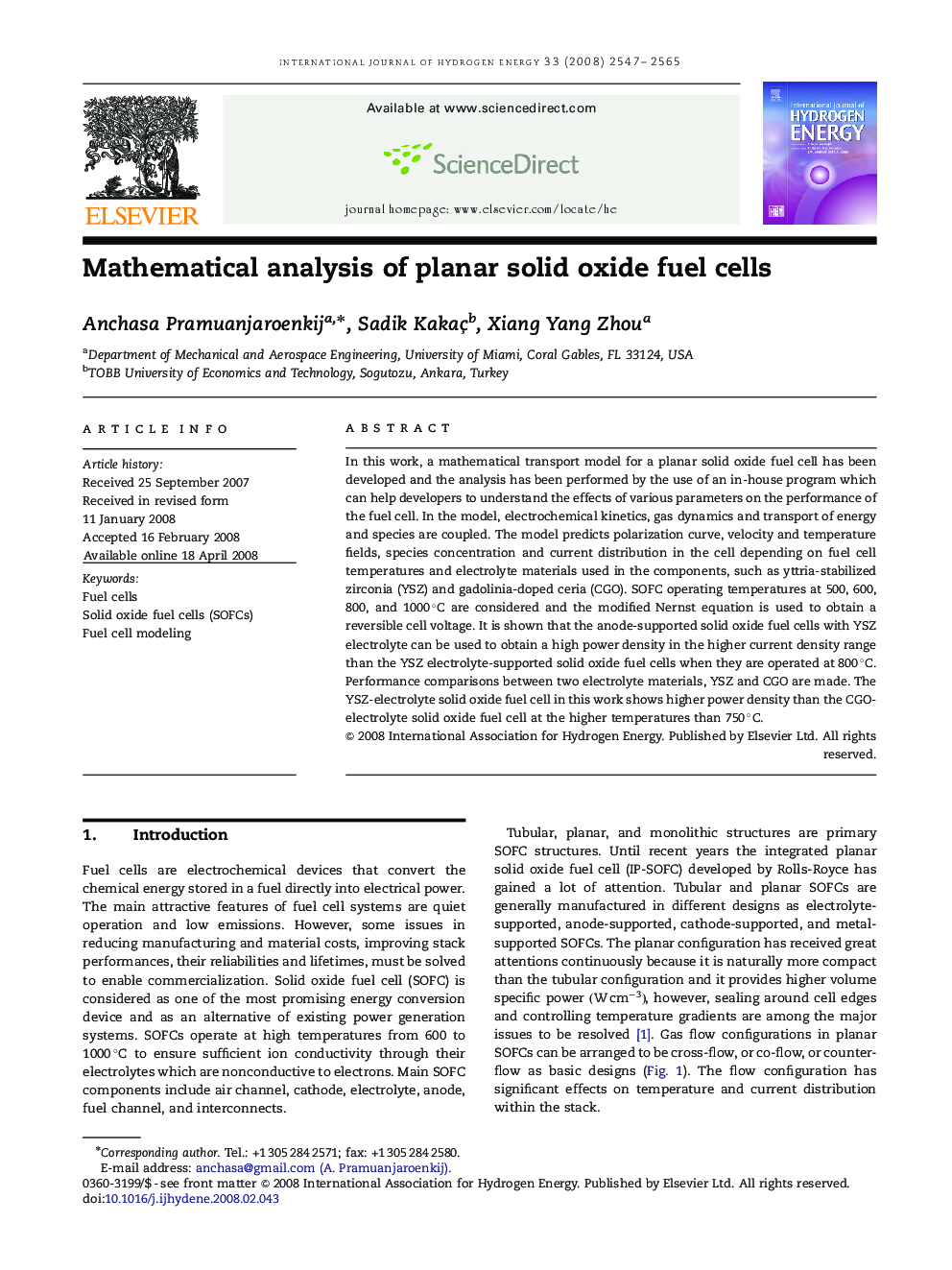| Article ID | Journal | Published Year | Pages | File Type |
|---|---|---|---|---|
| 1279075 | International Journal of Hydrogen Energy | 2008 | 19 Pages |
In this work, a mathematical transport model for a planar solid oxide fuel cell has been developed and the analysis has been performed by the use of an in-house program which can help developers to understand the effects of various parameters on the performance of the fuel cell. In the model, electrochemical kinetics, gas dynamics and transport of energy and species are coupled. The model predicts polarization curve, velocity and temperature fields, species concentration and current distribution in the cell depending on fuel cell temperatures and electrolyte materials used in the components, such as yttria-stabilized zirconia (YSZ) and gadolinia-doped ceria (CGO). SOFC operating temperatures at 500, 600, 800, and 1000∘C are considered and the modified Nernst equation is used to obtain a reversible cell voltage. It is shown that the anode-supported solid oxide fuel cells with YSZ electrolyte can be used to obtain a high power density in the higher current density range than the YSZ electrolyte-supported solid oxide fuel cells when they are operated at 800∘C. Performance comparisons between two electrolyte materials, YSZ and CGO are made. The YSZ-electrolyte solid oxide fuel cell in this work shows higher power density than the CGO-electrolyte solid oxide fuel cell at the higher temperatures than 750∘C.
